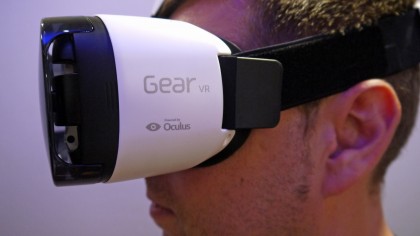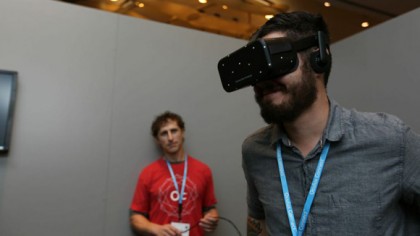Virtual reality can also be a huge benefit to the human resources departments of organizations as they try to woo potential employees to join their teams. As of late, company culture has become one of the biggest considerations for job seekers, particularly in a workforce made up in large part by millennials, who consider flexible and forward-thinking work arrangements to be key indicators of a fruitful employment opportunity. What better way to show what a day in the life of an employee at your organization is like than simulating it through virtual reality? Now, candidates can experience a full, realistic tour of a company's offices, as well as a run-through of what a typical day of an employee would be like. This can drive more informed decisions by potential candidates when choosing their next employer, which benefits human resource departments who will see a decrease in turnover and increase in retention rates as they will be making stickier hires.

With augmented reality technology, businesses have the opportunity to take 2D ideas into the 3D realm. Virtual reality technology can revolutionize development, allowing businesses to test scenarios and designs, and experience products before they are even made. A great example of this is Ford's use of virtual reality technology to develop its designs, which began in 2000 and have become central to their automotive development using the Oculus Rift headset. Using the headset technology, Ford is looking for the perceived quality of vehicles, as a customer would see them; they want to be able to see their cars and experience them before actually having produced them. Examining the entire exterior and interior of a car design, the virtual reality technology links right into a computer aided (CAD) system. While adoption of this still has a long way to go despite proven success with 111-year-old Ford, this application of the virtual reality technology can be extremely cost- and time-efficient for businesses across all different verticals, but especially those which manufacture tangible products.
Virtual reality can also be a great tool for team-building, particularly as companies continue to globalize and expand their teams into different markets. Keeping international teams collaborative and connected is hard, even with modern video chatting and messaging technologies. With our current processes, it can leave different global offices feeling isolated from their international teammates, leading to a less productive and less cohesive team. Using virtual reality technology, companies can instate realistic conferencing for global teams, as well as other team-building exercises that can help everyone feel engaged. Management teams can set up virtual retreats and social events via virtual reality technology to encourage deeper communication and engagement between colleagues in a way that doesn't require costly and time-consuming international or regional flights, but still accomplishes the relationship-building necessary to nurture a successful team.
Virtual reality can turn the way we shop online upside down, as well. Up until now, our "in-store" experience with Web and app-based stores has been flat. Two-dimensional pictures of what we're purchasing, single-toned pages with blocks of lengthy, descriptive text and little-to-no help when making purchase decisions. By applying virtual reality, we can turn our online shopping experience into an immersive and personal one, similar to what we experience in-store. Imagine virtual sales representatives providing us with valuable information about products we are considering, as well as insights into similar options. Or how about actually being able to experience the product in three dimensions, getting a deeper look into size, weight, and appearance? This can be a game-changer for e-commerce, lowering the barrier to entry for online shopping as users who were previously too nervous to purchase something online without a deeper engagement with the product.

At its core, augmented and virtual reality is all about enhancing user experience, so we shouldn't be surprised as brands begin to wake up and try to conquer the utility of virtual reality to enhance their business practices. Using this digitally enhanced view of the world in which we live and interact on a daily basis, companies will be able to build brand loyalty, employee retention, and impact the bottom line with improved operational and training tactics. It shouldn't be long until virtual reality becomes a tangible one for companies across the board.
Are you a pro? Subscribe to our newsletter
Sign up to the TechRadar Pro newsletter to get all the top news, opinion, features and guidance your business needs to succeed!
- 1
- 2
Current page: HR, product development and in-store experiences
Prev Page VR for training and gamification